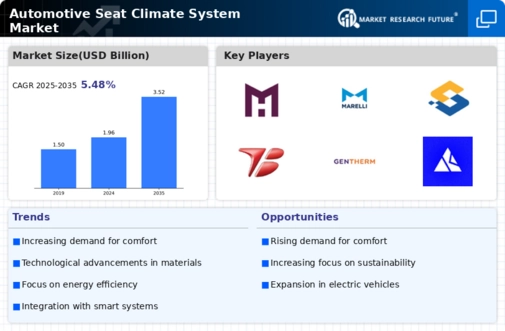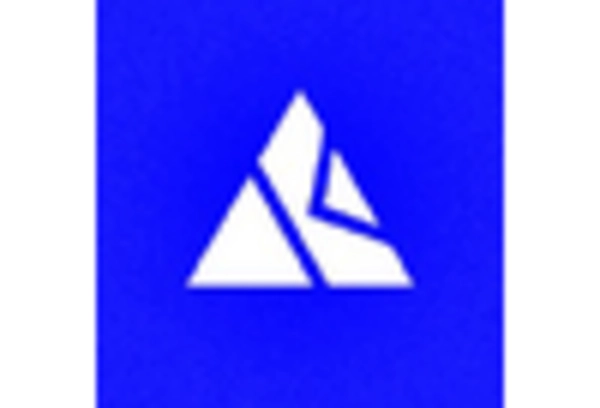Electric Vehicle Growth
The rise of electric vehicles (EVs) is significantly impacting the Automotive Seat Climate System Market. As EV adoption continues to increase, the demand for efficient climate control systems tailored to electric powertrains is becoming more critical. Unlike traditional vehicles, EVs require innovative climate solutions that optimize energy consumption while maintaining passenger comfort. The Automotive Seat Climate System Market is likely to benefit from this shift, as manufacturers develop specialized systems that cater to the unique needs of electric vehicles. Market forecasts suggest that the EV segment will account for a substantial portion of the automotive market by 2030, further driving the demand for advanced seat climate systems designed for energy efficiency and performance.
Sustainability Initiatives
Sustainability initiatives are playing a pivotal role in shaping the Automotive Seat Climate System Market. As environmental concerns gain prominence, manufacturers are increasingly focusing on developing eco-friendly climate control systems. This includes the use of sustainable materials and energy-efficient technologies that minimize the carbon footprint of automotive products. The push for sustainability is not only driven by regulatory requirements but also by consumer preferences for greener options. Research indicates that a significant percentage of consumers are willing to pay a premium for vehicles equipped with environmentally friendly features. Consequently, the Automotive Seat Climate System Market is likely to see a rise in demand for sustainable climate solutions, as manufacturers align their offerings with the growing emphasis on environmental responsibility.
Technological Advancements
The Automotive Seat Climate System Market is experiencing a surge in technological advancements that enhance user comfort and convenience. Innovations such as advanced heating and cooling technologies, integrated sensors, and smart climate control systems are becoming increasingly prevalent. These technologies not only improve the overall driving experience but also contribute to energy efficiency. For instance, the integration of IoT devices allows for personalized climate settings based on user preferences, which is expected to drive market growth. According to recent estimates, the market for automotive climate control systems is projected to reach USD 10 billion by 2026, indicating a robust demand for advanced features in vehicles. As manufacturers continue to invest in R&D, the Automotive Seat Climate System Market is likely to witness further enhancements in functionality and performance.
Consumer Demand for Comfort
Consumer demand for enhanced comfort in vehicles is a primary driver of the Automotive Seat Climate System Market. As consumers increasingly prioritize comfort during their driving experience, the need for effective climate control systems becomes more pronounced. This trend is particularly evident in the luxury vehicle segment, where features such as heated and ventilated seats are often standard. Market Research Future indicates that nearly 60% of consumers consider seat climate control a crucial feature when purchasing a vehicle. This growing expectation is pushing manufacturers to innovate and incorporate advanced climate systems into their offerings. Consequently, the Automotive Seat Climate System Market is likely to expand as automakers respond to consumer preferences, leading to a wider adoption of these systems across various vehicle categories.
Regulatory Standards and Safety
Regulatory standards and safety considerations are increasingly influencing the Automotive Seat Climate System Market. Governments are implementing stringent regulations regarding vehicle comfort and safety, which necessitates the incorporation of advanced climate control systems. For example, regulations aimed at improving passenger comfort and reducing fatigue during long drives are prompting manufacturers to enhance their seat climate systems. Additionally, safety standards related to temperature control in vehicles are becoming more rigorous, further driving the demand for sophisticated climate systems. As a result, the Automotive Seat Climate System Market is expected to grow as manufacturers adapt to these evolving regulations, ensuring that their products meet both comfort and safety requirements.


















Leave a Comment